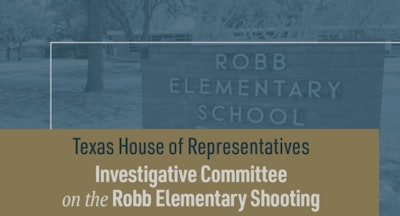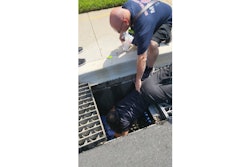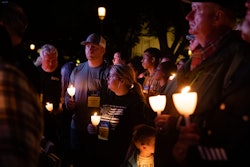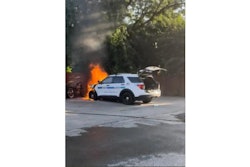 The The Texas House of Representatives has released a report by the Investigating Committee on the Robb Elementary Shooting.PHOTO: Texas House of Representatives
The The Texas House of Representatives has released a report by the Investigating Committee on the Robb Elementary Shooting.PHOTO: Texas House of Representatives
The Investigating Committee on the Robb Elementary Shooting provided its Interim Report 2022 to the Texas House of Representatives and reports the school district police department failed to implement and follow its own active shooter plan. The report states the committee found “systemic failures and egregious poor decision making.”
The committee qualified the 82-page report as “not complete” because they do not yet have access to all material witnesses, medical examiners’ findings are not complete, and multiple investigations are still ongoing surrounding the May 24 shooting that killed 19 students and two teachers.
“Like the rest of us, educators and law enforcement officers sometimes fail at crucial moments. When they do, that does not diminish the good work and sacrificial service of their professions as a whole,” the report states. “Other than the attacker, the committee did not find any ‘villains’ in the course of its investigation. There is no one to whom we can attribute malice or ill motives. Instead, we found systemic failures and egregious poor decision making.”
Until recently, the Uvalde Police Department was responsible for security in the Uvalde public schools. In 2018, Uvalde Consolidated Independent School District (CISD) established its own police department, headquartered at Uvalde High School. With nine different schools and a budget for six police officers, Uvalde CISD oversees more campuses than it has officers, and it has assigned no officer specifically to Robb Elementary. Instead, officers would regularly visit the Robb campus for a walk-through several times per week, usually lasting from 15 to 45 minutes.
RESPONSE PLAN
The committee reports a failure to follow the school district’s written plan for dealing with an active shooter situation and says also that “law enforcement responders failed to adhere to their active shooter training, and they failed to prioritize saving the lives of innocent victims over their own safety.”
The Uvalde school district had a written active shooter plan that directed the district’s police chief to assume command and control of a response to an active shooter situation. Despite the chief being one of the first responders to arrive, the committee found “he failed to perform or to transfer to another person the role of incident commander.”
Before joining the Uvalde CISD Police Department, Chief Pete Arredondo received active shooter training from the Advanced Law Enforcement Rapid Response Training (ALERRT) Center. The line of succession under the Uvalde CISD police department’s active shooter response plan are Arredondo, Uvalde CISD Police Department Lt. Mike Hernandez, and then Director of Student Services Kenneth Mueller. The plan also outlines that a command post should be established in the school administrative office.
“The void of leadership could have contributed to the loss of life as injured victims waited over an hour for help, and the attacker continued to sporadically fire his weapon,” the committee report finds. “A command post could have transformed chaos into order, including the deliberate assignment of tasks and the flow of the information necessary to inform critical decision making. Notably, nobody ensured that responders making key decisions inside the building received information that students and teachers had survived the initial burst of gunfire, were trapped in Rooms 111 and 112, and had called out for help.”
The report found that some officers, both inside and outside the school building, knew through radio traffic that students and teachers had survived the initial round of gunfire and needed medical care. However, nobody in command recognized the shooter was preventing medical care from reaching critically wounded victims.
“Correcting this error should have sparked greater urgency to immediately breach the classroom by any possible means, to subdue the attacker, and to deliver immediate aid to surviving victims. Recognition of an active shooter scenario also should have prompted responders to prioritize the rescue of innocent victims over the precious time wasted in a search for door keys and shields to enhance the safety of law enforcement responders,” the report states.
The committee found that an offsite overall incident commander may have realized radios were mostly ineffective for communications, found other means of communications, communicated information about 911 receiving calls from victims inside the classrooms, located a master key sooner, and thought to ask if officers had checked to see if the classroom doors were unlocked. The committee also believes the door to the classroom with the gunman had a broken lock, which means officers could have entered immediately without the need to wait on keys or tools.
"Uvalde CISD and its police department failed to implement their active shooter plan and failed to exercise command and control of law enforcement responding to the tragedy. But these local officials were not the only ones expected to supply the leadership needed during this tragedy,” states the report.
The report finds that hundreds of responders, many with better training and equipment than school police, arrived at the school yet none took the initiative to establish command. Also, nobody took the time to point out the lack of a command post and the committee sees that lack of initiative to question the absence of a command as a training deficiency. In total, 376 law enforcement officers responded to Robb Elementary School.
ALERRT training teaches that any law enforcement officer can assume command, that somebody must assume command, and that an incident commander can transfer responsibility as an incident develops. That did not happen at Robb Elementary, and the lack of effective incident command is a major factor that caused other vital measures to be left undone, the report states. Also, the misinformation reported to officers on the outside likely prevented some of them from taking a more assertive role. For example, many officers were told to stay out of the building because Arredondo was inside a room with the attacker actively negotiating. Responders did not remain focused on the task of “stop the killing,” the report finds.
SCHOOL SECURITY
The committee reviewed school security and found that Robb Elementary did not adequately prepare for the risk of an armed intruder on campus.
The first concern raised was the school’s five-foot tall exterior fence was inadequate to meaningfully impede an intruder, however the second concern left gaps in building security.
The second issue, which the committee reviewed in detail, centered around doors and door locks at the school. The school had adopted security policies to lock exterior doors and internal classroom doors, but according to the committee report there was a culture of noncompliance by school personnel who frequently propped doors open and deliberately circumvented locks.
“At a minimum, school administrators and school district police tacitly condoned this behavior as they were aware of these unsafe practices and did not treat them as serious infractions requiring immediate correction. In fact, the school actually suggested circumventing the locks as a solution for the convenience of substitute teachers and others who lacked their own keys,” the report states.
According to the report, the committee found Room 111’s door had a faulty lock and school district police had specifically warned the teacher about it. The problem with locking the door had been reported to school administration, yet no one placed a written work order for a repair. Exterior doors also were left unlocked.
“In violation of school policy, no one had locked any of the three exterior doors to the west building of Robb Elementary. As a result, the attacker had unimpeded access to enter.” reports the committee. “Because of these failures of facilities maintenance and advance preparation, the attacker fired most of his shots and likely murdered most of his innocent victims before any responder set foot in the building. Of the approximately 142 rounds the attacker fired inside the building, it is almost certain that he rapidly fired over 100 of those rounds before any officer entered.”
Another factor contributing to relaxed vigilance on campus was the frequency of security alerts and campus lockdowns resulting from a recent rise of “bailouts”— the term used in border communities for the increasingly frequent occurrence of human traffickers trying to outrun the police, usually ending with the smuggler crashing the vehicle and the passengers fleeing in all directions. The frequency of these bailout-related alarms in Uvalde —around 50 of them between February and May of 2022 —contributed to a diminished sense of vigilance about responding to security alerts.
“The alert system does not differentiate its signals between bailouts and other kinds of alerts, such as an active shooter situation. The series of bailout-related alerts led teachers and administrators to respond to all alerts with less urgency—when they heard the sound of an alert, many assumed that it was another bailout,” the report finds.
NOT TAKING THE SHOT
Contradicting an earlier report by ALERRT, the committee found that there was not an instance where an officer hesitated when he had an opportunity to fire at the school shooter before he entered the building.
During testimony before the committee, an ALERRT representative admitted he had learned that DPS had received an additional statement from the officer, stating he no longer believed he had seen the attacker when he sought permission to shoot.
In fact, and as the committee concludes, that officer saw a coach ushering kids inside—something the Texas Rangers, under the purview of Department of Public Safety, had discussed with the officer during a later interview. Uvalde Mayor McLaughlin issued a statement explaining as much, and ALERRT quickly caveated its findings, saying it did not know “the officer gave a third statement to investigators that was different from the first two statements.”

















